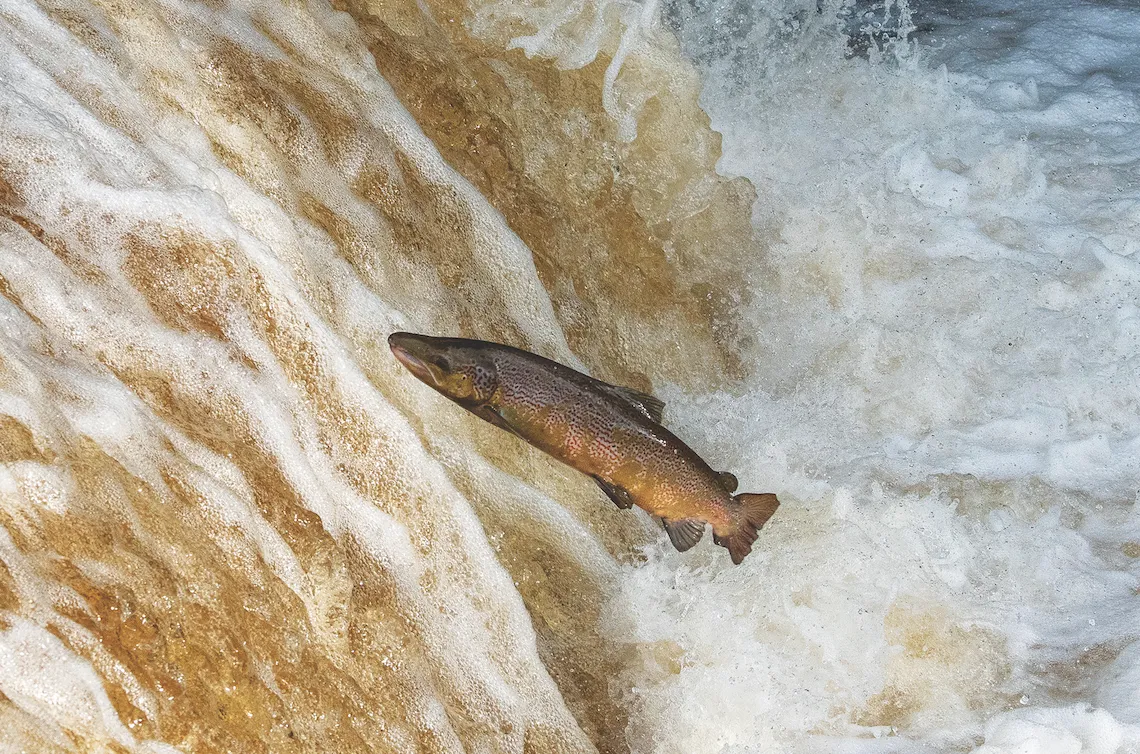After a deluge of heavy autumn rain, nothing prepares you for Afon Teifi’s roar as it crashes over Cenarth Falls.
Such is its force through this narrow, wooded gorge, you can feel the vibrations through your boots as the river punches its way through. Yet on another autumn day, fallen golden leaves dance gracefully on the river’s tranquil surface as they glide daintily through the cascades. Afon Teifi is a creature of contrasts.
The Teifi’s 73-mile journey begins 455 metres up, in the Cambrian Mountains. Map-lovers may spot the grey-dashed line along much of its course, indicating that the river is the border between Carmarthenshire and Ceredigion, and then later, Ceredigion and Pembrokeshire.

Leap salmon and trout on the Afon Teifi
The Teifi’s power is evident from the design of the three-arched, 18th-century stone bridge that carries A484 traffic across its course. Two two-metre large cylindrical holes, either side of the central arch, allow floodwater to flow through the bridge’s supports rather than over the top.
Yet, despite its force, there are animals prepared to battle the Teifi’s might, giving rise to one of the world’s greatest natural phenomena – thousands of salmon and sea trout hurling themselves into the air, leaping Cenarth Falls as they head upstream to spawn. The average Teifi salmon weighs four kilos, although nine-kilo salmon are not uncommon. Seeing these shimmering, muscular fish negotiate the falls is a truly thrilling sight.
Cenarth and Afon Teifi walk
A recently restored boardwalk follows the river upstream from Cenarth for three-quarters of a mile. On the opposite bank stands the remains of the 17th-century flour mill, now home to the National Coracle Centre. Sitting on the site of an earlier mill – once owned by Edward I when he became Cenarth’s lord of the manor – it recounts the history of these small rounded boats, favoured by local fishermen.
Along the Teifi’s calmer sections, dippers plunge into its depths, where autumn’s colours are reflected and food is plentiful. A kingfisher or an otter may join them as they search for their next fishy meal.
Where the Teifi turns right, the footpath forks left, bending through the leaf-shedding oak wood to a minor road. Turn left and follow this narrow lane perched high above the Teifi.
In full spate, the Teifi’s thunderous roar remains a constant travelling companion on this 1.2-mile amble. It also signals to the trout and salmon downstream that they are fast approaching the Teifi’s first natural obstacle since they left the Atlantic behind.
